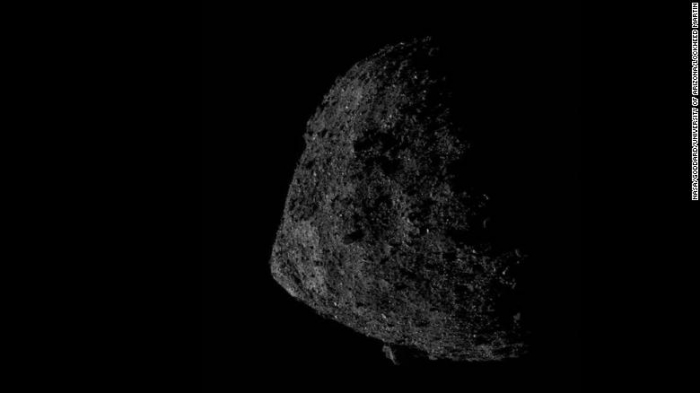New analysis of the meteorite, called Acfer 049, has revealed ice fossils trapped inside, making it the first direct evidence of frozen water as a building block of early asteroids.
Given the meteorite's age, it also preserves material that created our solar system, providing a unique look at our corner of the universe and how it formed. The new findings published this month in the journal Science Advances.
Scientists know that it was possible for asteroids to include ice as an ingredient in their structure, mainly due to the way water altered minerals in the asteroids. But they wanted to understand more about the amount of water, its distribution throughout the asteroid structure, called a matrix, and when it melted.
Acfer 049 preserved tiny pockets that once contained the ice before it melted and researchers call these microscopic holes ice fossils.
Like other solar systems, ours began with the formation of a star. The sun formed from a cloud of dust and gas and the leftover materials not used to create the star became the ingredients for the planets in our solar system. Then gas and elements formed into a flat planetary disk around the sun and that included hydrogen, ice, iron and silicates.
Over time, the dust and elements stuck together, forming planets and other bodies, including asteroids. This is why asteroids and comets are considered to be the leftovers of material that formed the solar system.
Ice, which could be found beyond the snow line of the planetary disk where solid water ice can form, was also included in the mix. The snow line existed in the disk at a distance from the star where its heat couldn't maintain liquid water.
"This is starting material from which all the planets, including Earth, came from," said Epifanio Vaccaro, study author and Curator of Petrology at London's Natural History Museum. "The matrix of these meteorites is therefore thought to be the starting material from which all the planets formed."
The rocky bits of dust and ice that became asteroids retained a pristine record of the ingredients that created them. But the planets formed by rearranging their ingredients through heat -- metals melted to form the core while silicates created a mantle and crust. This means that rocks found on Earth are quite different than the material found in asteroids.
"When this happens, all the starting material that we had in the protoplanetary disk is gone as it went through the process of melting and recrystallisation," Epifanio said. "This means that if we want to understand what the dust was like as the solar system formed, we need to go back and grab some of the material that didn't go through this differentiation process. In some meteorites, we have that starting material preserved."
While dust and ice doesn't sound like the solid foundation for a rocky asteroid, its matrix is tightly constructed because of how its materials came together.
"The matrix itself is very fine-grained material that holds everything in the meteorite together," Epifanio said.
But the matrix itself made the meteorite difficult to study because they didn't have the technology to peer through the fine grains until now. The researchers used microscopes with high spatial resolution, which allowed them to finally see the tiny pockets that once contained ice.
These microscopes could be used to look at other meteorites and possibly find more evidence of ice fossils, the researchers said.
"Based on this finding of asteroidial ice, we made a model that tells us how the asteroid grew and how the planets formed," Epifanio said. "We think that fluffy ice and dust particles came together into bigger bodies beyond the snow line, and then migrated inwards. As they did so, the ice started melting, leaving the fossils in its place."
CNN
More about: meteorite solar-system
















































